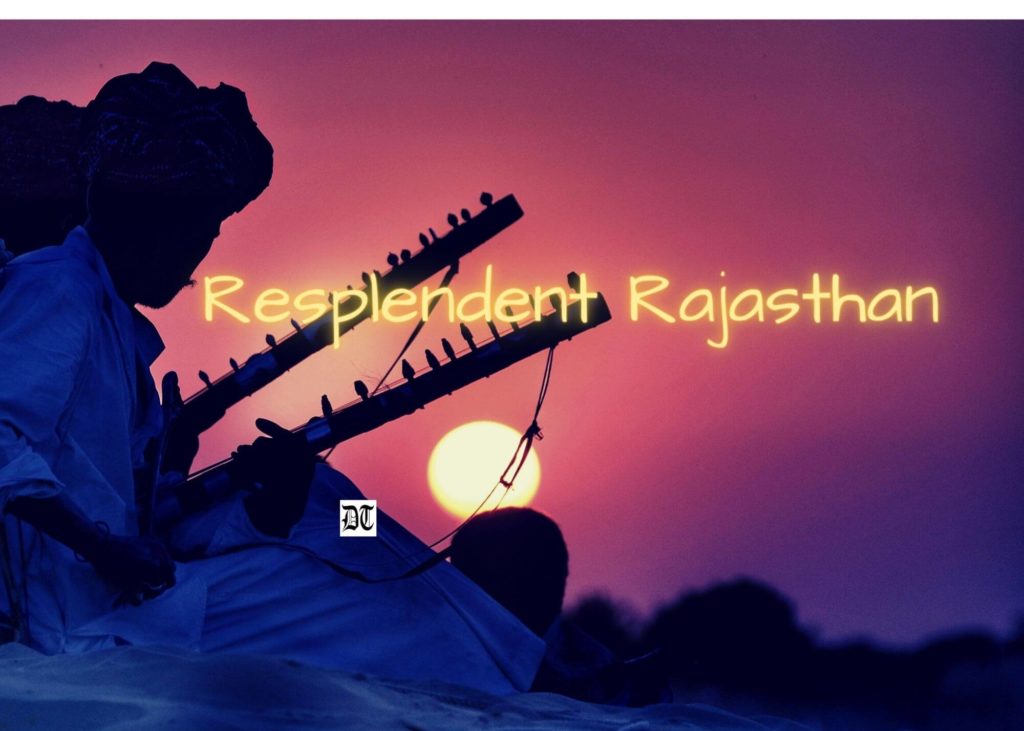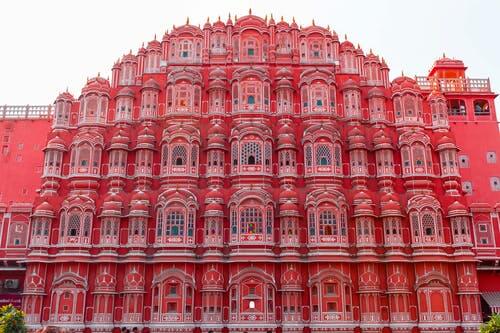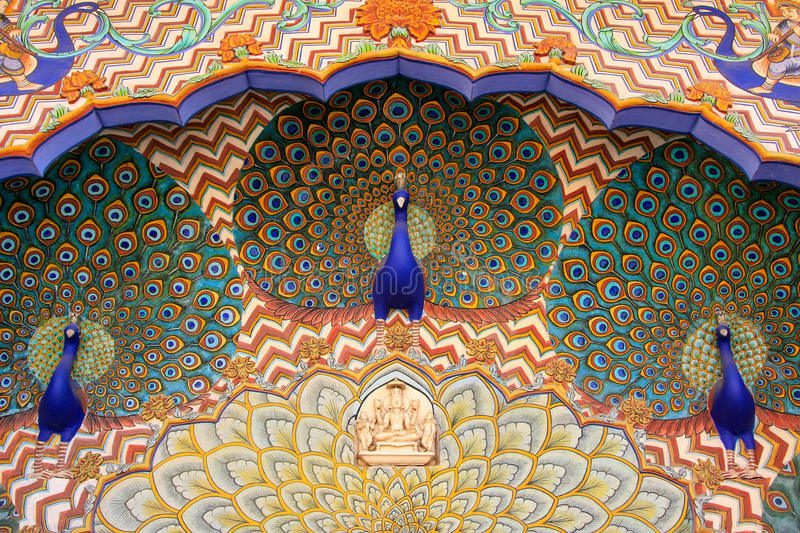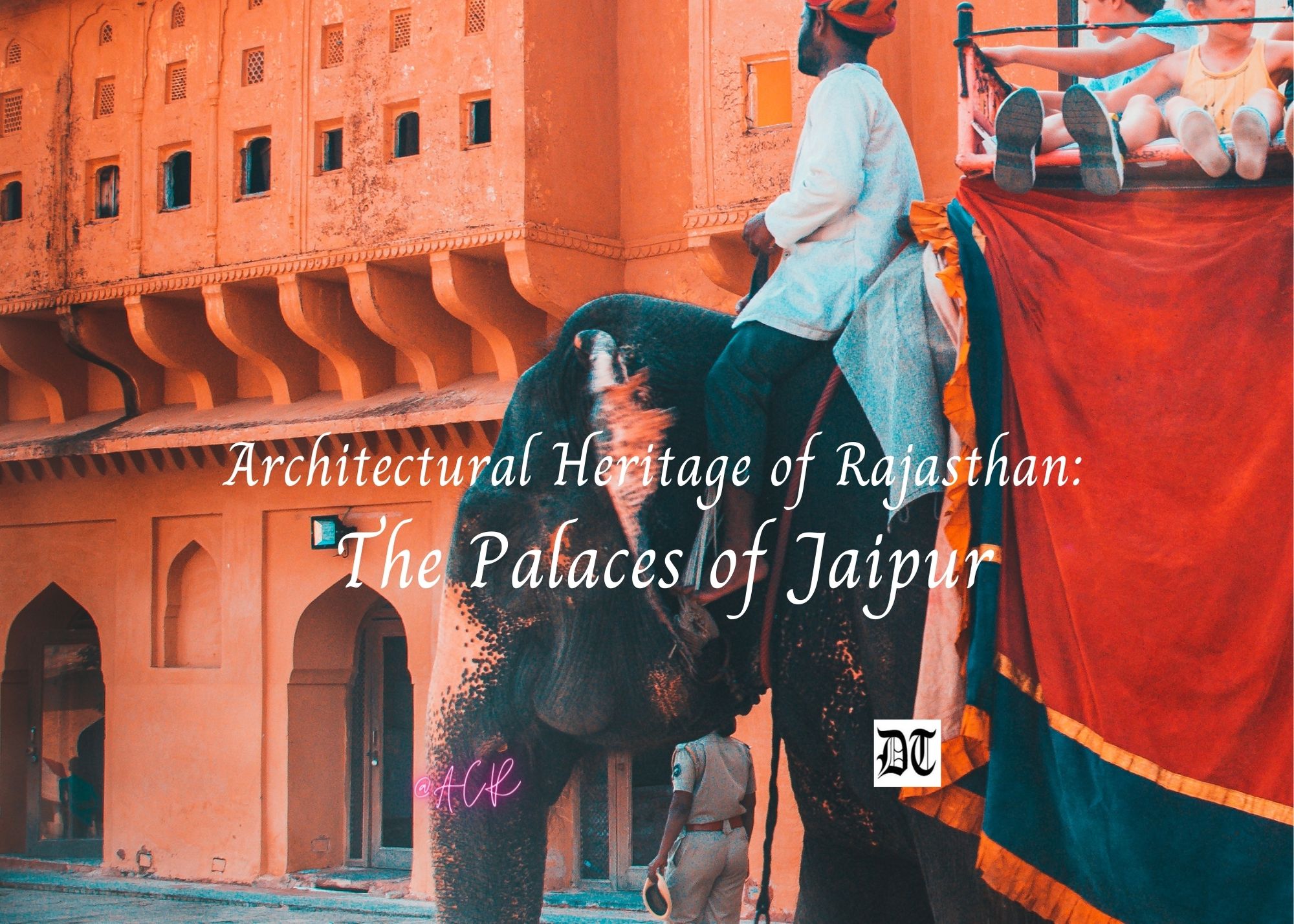Reading Time: 4 minutes
We are introducing a new weekly series, architectural heritage of Rajasthan, by Dr Parneet and Dr Kiran. It will focus on the most attractive palaces, forts, and Havelis that tell innumerable heroic tales even today. This first article investigates a few enthralling palaces of Jaipur, displaying royalty, exclusively for Different Truths.

Rajasthan literally means land where royalty resides. It has a special place in the cultural map of India with the treasured glory of its folk culture and grand architecture. The rich architectural heritage of Rajasthan mirrors the royal grandeur in the form of magnificent palaces, astonishing forts, amazingly carved temples, and majestic Havelis. These architectural marvels speak volumes about the dauntless spirit of the culture of Rajasthan, the bunch of gallantry and artistry, the symphony of clanging swords tuned with the symphonious ‘sarangis’ (stringed musical instruments).
While we visit the architectural wonders of Rajasthan, we may define its grandeur through three broad categories:
- Palaces
- Forts
- Havelis
We shall take a glance at the significant monuments that leave one in wonder at the finesse and majesty of art and architecture even after centuries have passed.
The architecture of the grand palaces built by the rulers of various Rajput dynasties tells the royal history of Rajasthan…
Palaces: The architecture of the grand palaces built by the rulers of various Rajput dynasties tells the royal history of Rajasthan in its own distinctive script made up of Jarokhas (windows), Jalis (filigrees), courtyards, Baradaries (corridors), gardens and ponds.
If we look at the architectural patterns, there is a fusion of Mughal and Hindu Rajput architecture in these palaces. In most of these, the Rajput style is visible in domed canopies, fluted pillars, lotus, and floral patterns, and the Islamic patterns lay bare in its stone inlay filigree work and arches.
… intricately designed Jarokhas and Jalis in palaces show their concern for the safety and security of women…
If we dig deep into the cultural connotations of these architectural structures, we find how intricately designed Jarokhas and Jalis in palaces show their concern for the safety and security of women, open courtyards tell of their hospitality, high walls boast of their concern for the security, the gardens and ponds with beautifully sculptured pieces sing of their aestheticism
wrapped in their love for nature.
Hawa Mahal
Hawa Mahal in Jaipur is a five-storied pyramid-shaped structure with 953 fascinating projected balconies or jharokhas with their intricate filigree work pointing at the strict custom of purdah mingled with a concern for the royal women to enjoy the festivities taking place around the palace. Meanwhile, the cool air passing through these jalis makes the palace a soothing resort in the scorching heat of summers in the sands of Rajasthan. Its top three stories are just a single room thick but at the base, there are two courtyards. From a distant view, it looks like a screen.

City Palace
In the heart of the city, the City Palace of Jaipur records its special place with majestic structures…
In the heart of the city, the City Palace of Jaipur records its special place with the majestic structures of seven-storied Chandra Mahal and the intricately carved in white and beige stone Mubarak Mahal along with Govind Dev ji Temple. It has a distinctive pattern of several courtyards, buildings, pavilions, its four gates known as ‘Pritam Niwas chowk’ adorned with themes representing the four seasons and Hindu gods. The seven floors of Chandra Mahal, the oldest building in the City Palace complex are constructed with unique architectural patterns. The first two floors known as Sukh Niwas and Rang Mahal are decorated with coloured glasswork,
the third, Shobha Niwas, with walls lavishly embellished with mirrors, tiles, and gold leaf detailing and the fourth floor, Chhavi Niwas, which was built to enjoy monsoon rains mesmerises with its blue and white decorations. The last floors, the Shri Niwas, and Mukut
Mandir are like the crown of the palace. The royal building in the complex, Mubarak Mahal was prepared for receiving foreign guests. The facade of the Mubarak Mahal has a hanging balcony and is identical on all four sides. We also find the spectacular Pritam Niwas Mahal and Madho Mahal in the complex.
The gates of the palace have a symbolic significance. The northeast Peacock Gate represents autumn and is dedicated to Lord Vishnu. The Southeast Lotus Gate suggests the summer season and is dedicated to Lord Shiva Parvati. The northwest Leheriya Gate is green in colour, symbolic of the spring season and dedicated to Lord Ganesha. The Southwest Rose Gate has a floral pattern and
represents the winter season and is dedicated to Goddess Devi.

Visuals by Different Truths

Co-author
Dr. Kiran Deep is Associate Professor in English at Sri Ganganagar (Rajasthan). Her English translation of eminent Punjabi poet Surjit Patar’s poems has been published by Sahitya Akademi. Her publications include the research book, “Mapping the Creative Terrain: Revisiting George Eliot and Thomas Hardy”, along with several articles in literary journals of national and international repute.
















Good write up. Beneficial for History lovers, students & tourists.
Loved reading this Kiran! A wonderful initiative!